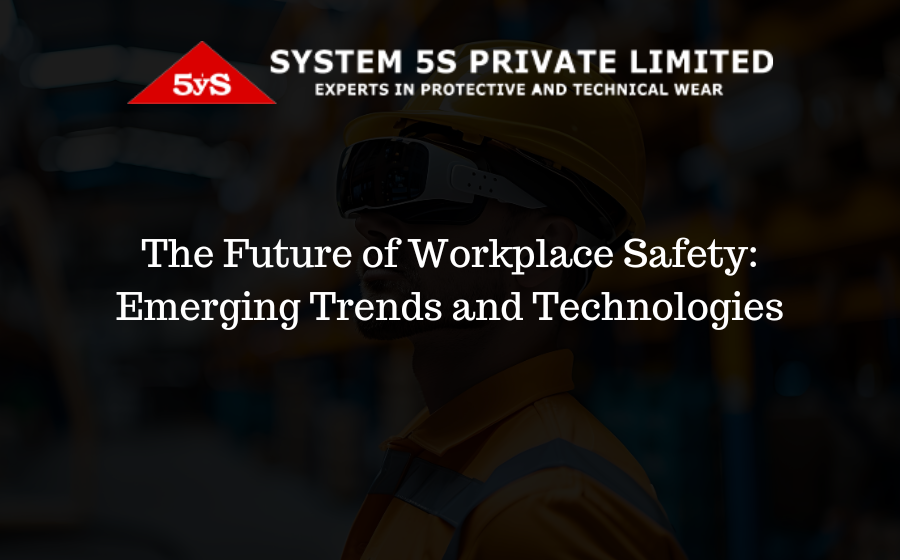
In today’s fast-evolving industrial landscape, workplace safety has become a top priority across industries. As technology continues to advance at a rapid pace, innovations are transforming the way we protect workers in hazardous environments. From smart personal protective equipment (PPE) to cutting-edge wearable technology, new trends and developments are not only enhancing safety but also improving operational efficiency and regulatory compliance. This blog explores the latest trends and technologies shaping the future of workplace safety and their impact on various industries.
1. Smart PPE
Smart PPE is revolutionizing workplace safety by integrating sensors, connectivity, and real-time data analysis into traditional protective equipment. These intelligent safety systems can monitor workers’ conditions, detect environmental hazards, and alert both the wearer and supervisors to potential risks.
Key Features:
Impact on Safety: By leveraging real-time data, smart PPE enhances situational awareness and helps prevent accidents before they occur, offering a proactive approach to worker safety.
2. Wearable Safety Technology
Wearable safety technology is transforming the way employers monitor and manage workplace safety. These devices, ranging from smartwatches to connected vests, are equipped with advanced sensors and GPS tracking systems that allow employers to monitor worker location, movement, and environmental conditions in real-time.
Key Features:
Impact on Safety: Wearable technology enables greater visibility and monitoring of workers, ensuring swift action during emergencies and better compliance with safety protocols.
3. Advancements in Material Science
The development of new, innovative materials is driving improvements in PPE, making them more durable, lightweight, and effective in protecting workers from various hazards. Materials such as Nomex® Nano , Nomex® Pbo , Heat resistant + Breathable membranes are being used to manufacture flame-resistant, chemical-resistant, and waterproof garments, offering enhanced protection against fire, chemical spills, and arc flashes.
Key Innovations:
Impact on Safety: By integrating advanced materials into protective clothing, workers are better protected from various workplace hazards, while also benefiting from improved comfort and sustainability.
4. Automation and AI for Safety Monitoring
Automation and artificial intelligence (AI) are being integrated into safety protocols to enhance risk assessment, incident response, and worker training. AI-powered systems can analyze vast amounts of data from sensors, cameras, and wearables to identify patterns, predict potential hazards, and trigger automatic responses.
Key Features:
Impact on Safety: Automation and AI offer a more proactive approach to workplace safety, reducing the need for manual interventions and improving the accuracy of risk assessments and incident reporting.
How These Trends Are Shaping the Future of Workplace Safety
1. Increased Worker Safety and Productivity
The integration of smart technology and advanced materials into workplace safety protocols is not only protecting workers more effectively but also enhancing their productivity. By ensuring that workers are well-protected and comfortable, these innovations reduce the likelihood of accidents and injuries, leading to fewer work interruptions and higher efficiency.
2. Improved Regulatory Compliance
As workplace safety standards evolve, regulatory bodies are increasingly focusing on the use of advanced technologies to meet compliance requirements. The data collected from wearables, smart PPE, and automated systems provide employers with detailed reports, making it easier to adhere to safety regulations and avoid costly penalties.
3. Enhanced Risk Management
By adopting predictive analytics and AI-powered safety systems, companies can better manage workplace risks, reducing the likelihood of accidents and minimizing liability. Early detection of hazards allows companies to take corrective actions before incidents occur, ensuring a safer work environment for all.
4. Cost Savings
While the initial investment in smart PPE, wearable technology, and advanced materials may seem high, the long-term benefits are significant. Reduced accidents, fewer injuries, and less downtime lead to cost savings in terms of insurance premiums, compensation claims, and lost productivity.
The future of workplace safety is being shaped by innovations in smart PPE, wearable safety technology, advancements in material science, and the integration of AI and automation into safety protocols. As these technologies continue to evolve, they will not only improve worker safety and efficiency but also help businesses stay compliant with regulatory standards and achieve long-term cost savings.
At System 5S, we are committed to staying at the forefront of these advancements, providing cutting-edge protective gear and safety solutions that safeguard workers in the most demanding industries. From PPE to flame-resistant clothing, we are dedicated to delivering products that prioritize safety, durability, and comfort.
If you want to learn more about how System 5S can help protect your workforce with the latest safety technologies, visit our website at www.system5s.com. Let’s work together to create a safer, smarter, and more efficient future for workplace safety.